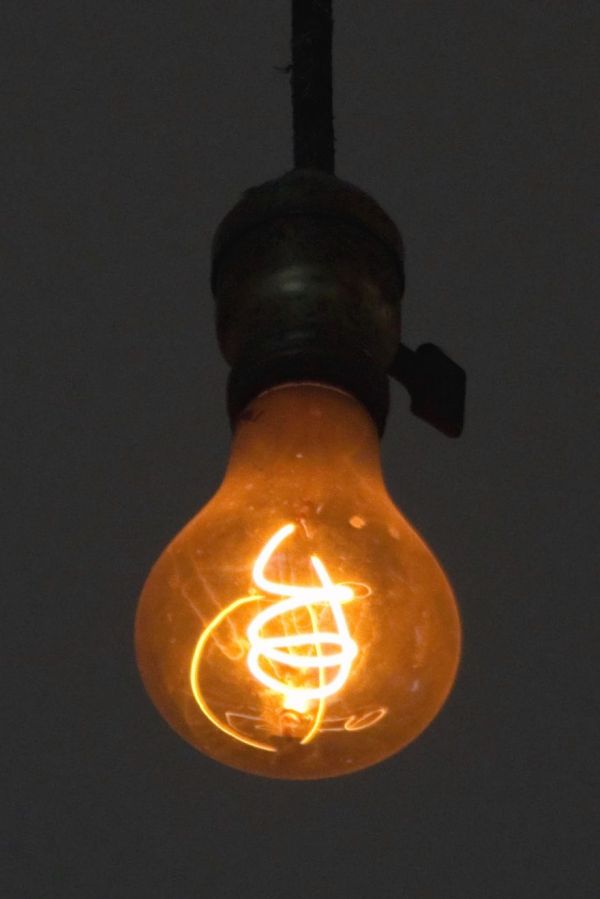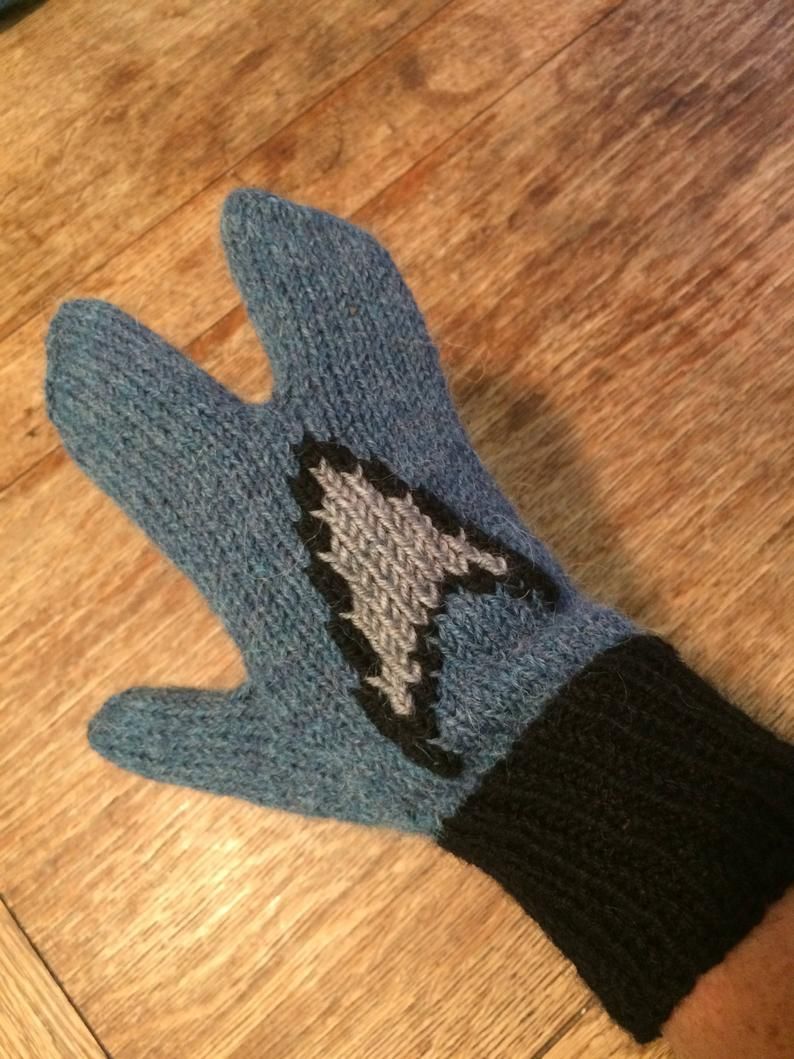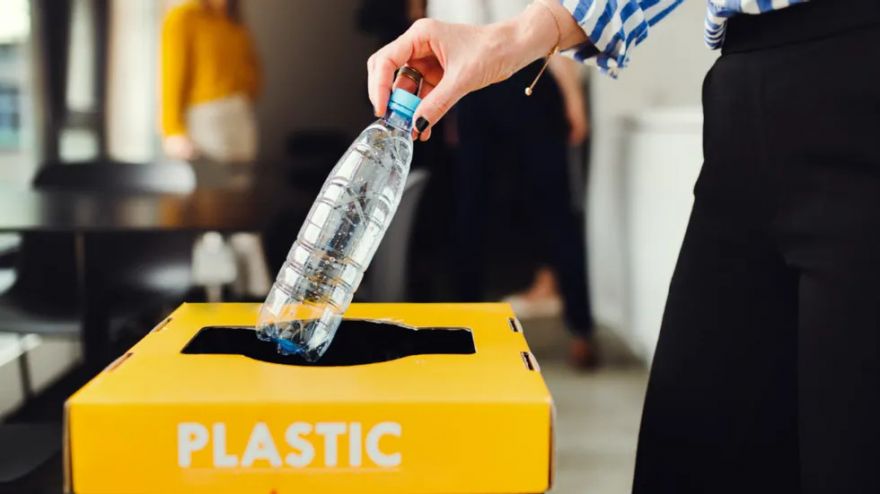Neatorama |
- The Great Light Bulb Conspiracy
- A Journey In The Ice Age
- Analyzing Word Usage To Assess The Risk of Alzheimer’s
- It’s A Self-Driving Tesla!
- Cooking With Non-Stick Pans: Is It Safe?
- "Smells Like Teen Spirit" Sung in Latin
- Serotonin and Brain Development
- If You Say "Cancelled Clown" Three Times into a Bathroom Mirror in this Burger King, The Ghostly Image of Ronald McDonald Will Appear
- Vulcan Salute Mittens
- Beccari’s Watercolor Paintings Showcase The Tranquility In Rippling Water
- 100 Years of Broomcraft
- Photographer Tracks Down The Couple In His Epic Drone Shot
- This Dwelling Has A Rooftop Pool Supported By Circular Patios
- Technically Legal
- The Recycling Myth We Still Believe
| The Great Light Bulb Conspiracy Posted: 28 Oct 2020 12:54 AM PDT
At one time in history, it was possible to buy a light bulb that would last more than 100 years. We know this because one of those bulbs is still burning at a fire station in California, 119 years after it was first switched on. Once incandescent lighting was unleashed into the public, everyone was working to make a better light bulb. So why aren't light bulbs built to last that way today?
What to do? The obvious answer was to organize a cartel, regulate prices, and set a limit on light bulb longevity. Read how that happened, and why your light bulbs never last long enough, at Today I Found Out. (Image credit: LPS.1) |
| Posted: 27 Oct 2020 08:34 PM PDT
Around 10,000-15,000 years ago, a person small in stature, possibly a young teenager or a short adult woman from the Pleistocene period, traveled across the ancient White Sands without a group. That person cut through a route where big mammals, such as mammoths and giant ground sloths, crossed during different times of day. The person's gait is uneven, as if they were carrying a load on their left hip. And three spots along the northbound trail reveal what that load must have been: a toddler, probably around three years old. The child's small feet left their own tracks when their guardian set them down just long enough to rest or switch arms. The question is, why? Learn more about this interesting story over at Ars Technica. (Image Credit: Ars Technica) |
| Analyzing Word Usage To Assess The Risk of Alzheimer’s Posted: 27 Oct 2020 08:34 PM PDT
Artificial intelligence has played a big role in many advancements in medicine, and it once again did just that in this scientific study. This time, AI helped in assessing a person's risk of having Alzheimer's by analyzing the said person's word usage. Other researchers have already trained various models to look for signs of cognitive impairments, including Alzheimer's, by using different types of data, such as brain scans and clinical test results. But the latest work stands out because it used historical information from the multigenerational Framingham Heart Study, which has been tracking the health of more than 14,000 people from three generations since 1948. If the new models' ability to pick up trends in such data holds up in forward-looking studies of bigger and more diverse populations, researchers say they could predict the development of Alzheimer's a number of years before symptoms become severe enough for typical diagnostic methods to pick up. And such a screening tool would not require invasive tests or scans. The results of the Pfizer-funded and IBM-run study were published on Thursday in EClinicalMedicine. Now that's just amazing. Learn more about this over at Scientific American. What are your thoughts about this one? (Image Credit: geralt/ Pixabay) |
| Posted: 27 Oct 2020 08:34 PM PDT
Driving requires intense focus on the part of the driver. He has to be aware of his surroundings by regularly scanning the environment. He also has to keep a good eye on road signs. In short, driving is a difficult activity for us humans. And if it's hard for us, that means it's harder for a computer. With those things in mind, Tesla might have just made a breakthrough in autonomous driving. "Elon, you mad man." That was one reaction to Tesla's latest "Full Self-Driving" (FSD) beta, an upgrade to the electric car company's self-driving suite that CEO Elon Musk called a "quantum leap," by an owner who was selected to test it out this week. [...] The new update allows the vehicle to highlight everything on the road, including pedestrians, unmarked lane dividers, and even parked cars on the side. If this does not amaze you, I don't know what will. Learn more details about this news over at Futurism. (Image Credit: Tesla Raj/ YouTube)
|
| Cooking With Non-Stick Pans: Is It Safe? Posted: 27 Oct 2020 08:34 PM PDT
Removing charred remains of food in your pans as you wash them is one of the most difficult things to do, and this reason alone makes non-stick pans a tempting alternative for those who love to be in the kitchen. The question is, are non-stick pans safe? Usually when people inquire about the safety of their non-stick cookware, they're talking about the brand Teflon, said Suzanne Fenton, a reproductive endocrinologist at the National Institutes of Environmental Health Sciences in North Carolina. Also known as polytertrafluoroethylene (PTFE), this clear plastic is used to coat metal pots and pans, giving them a waxy, easy-to-clean surface — and for decades, scientists have debated whether it's safe for cooking. Experts tend to agree that Teflon itself isn't a problem. The coating itself is considered non-toxic. Even if you ingest small flakes of it, it passes right through you. But some experts are concerned about what happens when Teflon gets too hot. "When pans are overheated, that PTFE coating begins to disintegrate," Fenton told Live Science. As Teflon breaks down, it releases a host of toxic gases. In rare instances, breathing in these chemical fumes can cause polymer fume fever, a condition characterized by a high fever, shortness of breath and weakness. These gases also deadly to birds — lightbulbs coated in Teflon have wiped out poultry houses. Of particular concern is perfluorooctanoic acid (PFOA), one of the chemicals released when Teflon pans heat up. Long-term exposure to PFOA is linked to a host of conditions from cancer to thyroid disease, Fenton said. More about this over at Live Science. (Image Credit: Andrevan/ Wikimedia Commons) |
| "Smells Like Teen Spirit" Sung in Latin Posted: 27 Oct 2020 07:14 PM PDT
The grunge classic by Nirvana is way, way older than 1991. YouTube user The Miracle Aligner offers this translation and performance. The channel also brings us "On Melancholy Hill" in Middle Scots, "The House of the Rising Sun" in 13th Century French, and Led Zeppelin's "Immigrant Song" in Old Norse. -via Weird Universe |
| Serotonin and Brain Development Posted: 27 Oct 2020 07:12 PM PDT
Serotonin is one of the happy hormones that our body produces, with the others being oxytocin and endorphins. And it is with good reason that serotonin belongs to the group. This hormone promotes good sleep, and helps in regulating appetite in mood. But it seems that serotonin can do much more than these. The researchers now report an additional, novel role of the happiness neurotransmitter serotonin which is known to function in the brain to mediate satisfaction, self-confidence and optimism—to act cell-extrinsically as a growth factor for basal progenitors in the developing human, but not mouse, neocortex. Due to this new function, placenta-derived serotonin likely contributed to the evolutionary expansion of the human neocortex. Amazing. More about serotonin over at Neuroscience News. (Image Credit: ColiN00B/ Pixabay) |
| Posted: 27 Oct 2020 01:50 PM PDT
Legend has it that if you say "Bloody Mary" three times into a mirror, then Queen Mary Stuart will attack you. Personally, I prefer the South Park version of the story, starring the ghost of Biggie Smalls. Playing up on the legend of Bloody Mary and poking fun at its rival, McDonald's, a Burger King outlet in Sweden has created a haunted bathroom. If you say "Cancelled Clown" -- a reference to Ronald McDonald -- three times, then the clown will appear before you. Business Insider reports: The software, installed by a Swedish agency named INGO Stockholm, is trained to listen for the phrase "canceled clown." If it hears it three times, it dims the lights, makes a noise, and plays visual effects on a screen behind the two-way "smart mirror." Ronald McDonald has been "cancelled" in that McDonald's has gradually removed the mascot from its advertising. -via Dave Barry |
| Posted: 27 Oct 2020 01:12 PM PDT
Etsy member Jennifer Symons made these cute mittens. They automatically put your fingers into the position of the Vulcan salute. Do you know the origin of this gesture from Star Trek? Memory Alpha describes how Leonard Nimoy invented it: The Vulcan salute was devised by Leonard Nimoy, based on a gesture made by various Jewish denominations, including Orthodox and Conservative. In TV Land's The 100 Greatest TV Quotes & Catchphrases, William Shatner described the salute as a benediction, comparing it to the Sign of the Cross. The gesture actually forms the Hebrew letter "Shin" and represents the honorific title "Shaddai", which means "Almighty (God)." The hand gesture is traditionally used by the Kohanim (Hebrew "priests"), Jews of priestly descent, during a blessing ceremony performed during the prayer service of certain Jewish holy days. The Jewish blessing is done with both hands, with arms extended upward at roughly a forty-five-degree angle, rather than one hand held upright as in the Vulcan salute. Nimoy learned the gesture, which takes practice to do, from visiting his grandfather's synagogue as a child. |
| Beccari’s Watercolor Paintings Showcase The Tranquility In Rippling Water Posted: 27 Oct 2020 12:31 PM PDT
At first glance, the amount of detail in the water can make you believe that the paintings are actual photographs of people enjoying the water. Marcos Beccari wonderfully captures the movement of waves of water and how the water refracts the image of submerged people, making you believe for a few moments that it's a photograph and not a painting. His paintings show the tranquility and peace people can have while bathing, as My Modern Met details: These radiant works typically feature one or more figures immersing themselves in picturesque coves or lagoons. Although swimmers are often the focus of Beccari's paintings, their faces are rarely in full view. Instead, the artist prefers to keep them anonymous, frequently distorting the features with moving water or by having their backs facing the viewer. This gives Beccari's works a sense of romantic nostalgia and allows the audience the opportunity to complete the narrative created in the painting. Before each new piece, Beccari gathers a variety of photo references to help him capture the light and find the right color palette. "The pictures which most often inspire me are from movies, which usually give me ideas for a drawing and motivate the painting process," he explains. "And lately I've focused on the body submerged in water, simply because it is a beautiful situation." Image via My Modern Met |
| Posted: 27 Oct 2020 12:29 PM PDT
Learn what broomcorn is and how brooms became such an integral part of Berea College at Smithsonian. The brooms are available here. |
| Photographer Tracks Down The Couple In His Epic Drone Shot Posted: 27 Oct 2020 11:23 AM PDT
This photograph of a lovely couple by Antonie Tissier was not planned. Tissier happened to shoot the couple while shooting in Chicago with his drone. He was just flying his drone to get photographs of the sunset when he captured the image of the couple standing under the Ulysses S. Grant monument. By the time he tried to catch up with them, they were already gone, as Petapixel details: Since he could not find them to share the image he took, Tissier intended to delete the photo when he arrived home, but his friends insisted he share the photo online and try to find the couple. The image was shared to Tissier's Instagram, a few Chicago Facebook groups, and the story aired on WGN 9 News Chicago. Just three days later, the couple was located. "To be honest I never believed we could find them," Tissier said. "They could even be tourists from anywhere else in the US or the world, and maybe they were already back into their plane the next day when I posted it online." Lucky for the couple, Emily and Omar, they were local. The on-the-ground photographer, Crane's Photography, has shared his perspective of that same moment on his Instagram: "It was so gorgeous and we couldn't believe our luck that someone else with a drone happened to be in the same spot as us to capture that photo," Emily said. "It's super cool that we were able to get in contact with the photographer though, now we'll have two awesome photos from that day from two completely different perspectives!" Image via PetaPixel |
| This Dwelling Has A Rooftop Pool Supported By Circular Patios Posted: 27 Oct 2020 11:22 AM PDT
The dwelling looks like a mechanical gear from afar. We're used to seeing cube or rectangular shaped buildings that we forget that it's possible to build impressive structures in different shapes. This two-storey home south of Lisbon, called Casa Trevo, has three circular patios and triangular-shaped indoor spaces, as Plain Magazine details: The patio's semi-open columns support a series of multi-level floor slabs which lead to and hold up the amazing rooftop lap pool. Possessing a sense of autonomy and monumentality, the dwelling subverts the perception of its scale while creating a dialogue between nature and architecture. "It exudes a solid impression of mass while revealing little of its inside," the studio says. "The house produces its own introverted world facing the sun, with private yet mutable spaces rendered intermittently by Lisbon's brash light." Image via Plain Magazine |
| Posted: 27 Oct 2020 10:41 AM PDT
|
| The Recycling Myth We Still Believe Posted: 27 Oct 2020 08:23 AM PDT
Did you believe that throwing the plastic waste you have in the proper 'recycling bins' was the key to saving the environment? Here's another question: did you believe that you've done your part every time you throw plastic cups or bottles in those special bins marked with the familiar triangle arrows? It turns out that the recyclability of plastics was grossly oversold by the plastics industry, as Ecowatch details: The creation of this recycling "myth" is why, despite 30 years of being diligent recyclers, we have things like the Great Pacific Garbage Patch. In fact, we've only recycled 9% of all the plastics we've ever produced. And, our use of plastics is still increasing every year. The reality of the situation is that recycling plastics is actually really hard and expensive. The myth created around plastic recycling has been one of simplicity. We look for the familiar triangle arrows, then pop the waste in the recycling bin so it can be reused. But the true purpose of those triangles has been misunderstood by the general public ever since their invention in the 1980s. These triangles were actually created by the plastics industry and, according to a report provided to them in July 1993, were creating "unrealistic expectations" about what could be recycled. But they decided to keep using the codes. Which is why many people still believe that these triangular symbols (also known as a resin identifier code or RIC) means something is recyclable. But according to the American Society for Testing and Materials International (ASTM) – which controls the RIC system – the numbered triangles "are not recycle codes." In fact, they weren't created for the general public at all. They were made for the post-consumer plastic industry. Image via Ecowatch |
| You are subscribed to email updates from Neatorama. To stop receiving these emails, you may unsubscribe now. | Email delivery powered by Google |
| Google, 1600 Amphitheatre Parkway, Mountain View, CA 94043, United States | |















No comments:
Post a Comment
Keep a civil tongue.